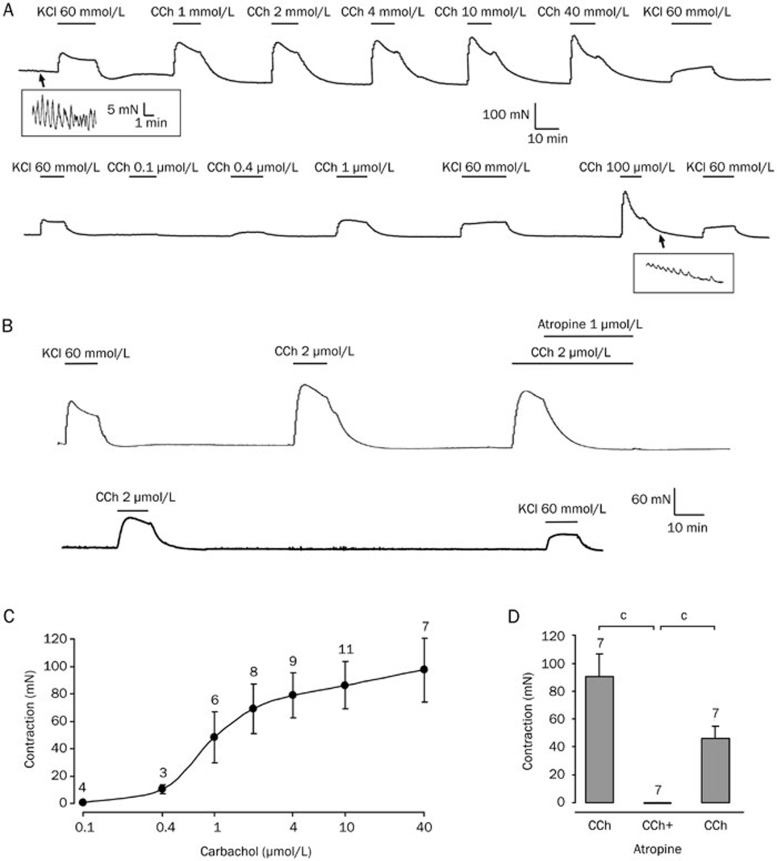Figure 1.
Carbachol-induced contractions in human detrusor in vitro are atropine-sensitive. (A) Carbachol (CCh, 0.1–100 μmol/L) caused dose-dependent contractions in a human detrusor specimen. The upper trace was started at 6 h following cystectomy. The gap between the upper and the lower trace is 7 h. KCl (60 mmol/L) was used at the beginning and at the end of the experiment to verify stable recording conditions. The insets demonstrate the rhythmic activity of detrusor smooth muscle. Note the different scales within the insets. (B) The upper trace (starting at 5 h following cystectomy) shows contractions induced by carbachol (CCh, 2 μmol/L) in a human detrusor specimen that were abolished by the muscarine receptor antagonist atropine (1 μmol/L). The lower trace shows partial recovery of carbachol-induced contraction following washout of atropine. (C) Dose-response curve of carbachol in human detrusor. The half-maximal contraction was achieved between 1 and 2 μmol/L carbachol (EC50=1.1 μmol/L). Note that a single specimen was tested at multiple concentrations (total number of specimens: n=15 of 4 patients). (D) Carbachol-induced contractions were significantly reduced following atropine (total number of specimens: n=7 of 2 patients). bP<0.05, cP<0.01.

